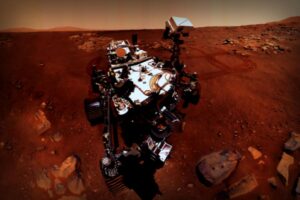Solving intricate scientific challenges could take scientists years, but with the advances in AI, this time might shrink to just a fraction.
Dr. Shuiwang Ji, a notable academic from Texas A&M University and a pioneer in the innovative realm of AI applications in science—known as AI4Science—is making strides in modernizing how we tackle scientific inquiries.
Recently, Dr. Ji, along with colleagues from Texas A&M, released a comprehensive study in the journal Foundations and Trends in Machine Learning. This collaboration involves contributions from over 60 experts across 15 institutions, pairing together an extensive 500-page report focused on AI’s role in scientific domains.
The research illustrates how AI can dramatically enhance solutions for complex equations that play vital roles across various scientific fields. A prime example is Schrodinger’s equation, a fundamental formula in quantum mechanics. Leveraging AI to tackle this supports advances in multiple areas, from uncovering new drugs to creating better battery materials and designing catalysts.
Dr. Ji notes the aim of natural sciences: to decode the world across various time frames and physical contexts, which comprises three main systems—quantum, atomic, and continuum. “Differential equations govern these systems, but as one attempts to explore larger systems, the difficulty of these equations escalates significantly,” he emphasized.
While small-scale differential equations—like the dynamics of two electrons—can be analyzed analytically, the complexity skyrockets with an increasing number of particles, often rendering practical resolutions impossible.
By harnessing AI capabilities, researchers can investigate large systems much more swiftly compared to traditional analytical methods.
“Utilizing AI allows us to deepen our scientific understandings and design advanced engineering frameworks more efficiently,” Dr. Ji stated. He leads Texas A&M’s Research in Artificial Intelligence for Science and Engineering (RAISE) Initiative, which encourages extensive collaboration among more than 85 faculty members focused on AI-driven research.
“My curiosity is rooted in the essential nature of science, a driving force behind myriad engineering and scientific inquiries, thanks to shared core principles and governing equations,” shared Dr. Ji.
For more details: Xuan Zhang et al, Artificial Intelligence for Science in Quantum, Atomistic, and Continuum Systems, Foundations and Trends in Machine Learning (2025). DOI: 10.1561/2200000115
Originally provided by Texas A&M University


















